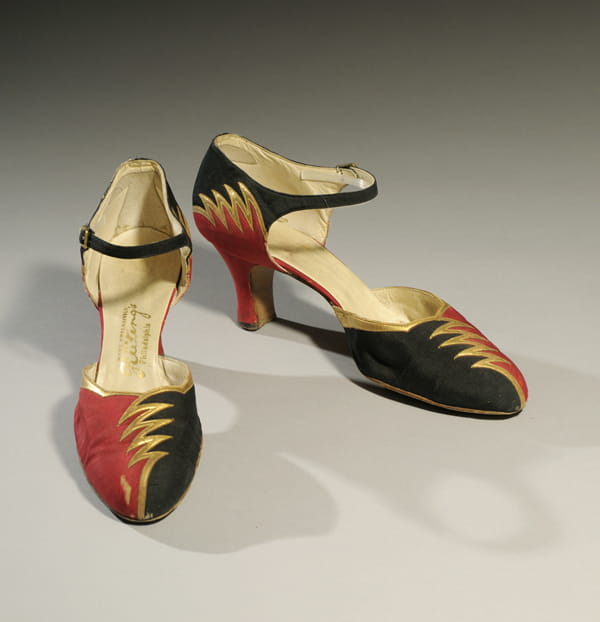Drexel’s Historic Costume Collection Opens to the Public for the First Time with “Fashion Fridays”
October 04, 2013
The Drexel Historic Costume Collections includes this 2-piece day dress from the French couture house of Callot Soeurs' fall 1927 collection.
A treasure trove of textiles and garments spanning more than 200 years – once one of Drexel University’s best kept secrets – is opening to the public for the first time.
The Drexel Historic Costume Collection, which was previously open to the public by appointment only and primarily for research purposes, is now launching quarterly, full-day “Fashion Fridays.” The events will each include an educational seminar on a particular aspect of fashion history and a customized viewing of the collection.
Housed in Drexel’s Antoinette Westphal College of Media Arts & Design, the museum-quality collection of more than 12,000 garments and accessories dates back centuries, with holdings including garments worn by actress Greta Garbo, American socialite and style icon Babe Paley and Princess Grace of Monaco.
It is one of the oldest teaching collections in the United States. The oldest documented objects are a man’s waistcoat dating from the 1750s and a group of 16th century velvets. The internationally recognized collection has lent objects to exhibitions in Paris and Milan.
|

Clare Sauro is the curator of the Drexel
Historic Costume Collection |
According to a recent feature story on the collection in The Philadelphia Inquirer, “Walking into the 3,000-square-foot space is like entering a chilly (the clothes need to be kept at 65 degrees), sterile science lab…Yet the moment Sauro opens one of the massive units filled with 256 years of dresses, cloaks, undergarments, hats, gloves, shoes, and purses, the space comes alive. It's a tweed, glitter-filled dream come true for vintage shoppers.”
The first Fashion Friday event will be held on Friday, Oct. 25 from 9:45 a.m. – 3 p.m. at Drexel’s URBN Center (3501 Market St.) with a seminar entitled, “History of 1920s Fashion.” Tickets are $100 for the full day, including lunch, and can be purchased online or by calling 215-571-3504. Drexel alumni can purchase tickets for a discounted price of $85. Space is limited. All proceeds will benefit the Drexel Historic Costume Collection.

A pair of black and red evening shoes
with a “lightning bolt” bolt motif from
the late 1920s |
The "History of 1920s Fashion” seminar will take an extended look at the fashions of the jazz age, a period when fashionable women abandoned the restrictive clothing styles of previous generations and which has once again become popular thanks to hit TV shows like PBS’s Downton Abbey and HBO’s Boardwalk Empire and films such as Baz Luhrmann’s film adaptation of F. Scott Fitzgerald’s classic novel The Great Gatsby. The seminar will include a presentation by the collection’s curator Clare Sauro and an exclusive behind-the-scenes look at examples from the collection.
“Hundreds of students and researchers visit the Drexel Historic Costume Collection each year, but although the collection makes every effort to accommodate guests, access to the collection has been limited,” said Sauro. “Fashion Fridays are an attempt to accommodate this growing interest in the collection and share it with the public in a deeper, more meaningful capacity.”
The Drexel Historic Costume Collection was formed in the late 1890s by A.J. Drexel to serve as an educational resource for the students of Drexel University. Through the remarkable generosity of donors, the collection has become one of the nation's finest teaching collections. The mission of the collection is to educate and inspire, while providing a significant resource for an ever-expanding community of historians, scholars, artists and designers.
In January 2013, the collection was relocated into new facilities in the Westphal College’s new URBN Center, which has greatly improved the accessibility and visibility of the collection while preserving the collection for future generations of researchers and admirers.
Media Contact